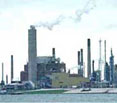Growth above 6% without reforms could overheat economy: World Bank
21 Jun 2014
The Indian economy cannot grow at more than around 6 per cent without showing effects of overheating in the current scenario, according to the World Bank.
 Given current levels of workforce, total manufacturing productivity, and investments, any faster growth may actually be dangerous, suggested World Bank economist Andrew Burns, the lead author of the 'Global Economic Prospects 2014' report, said while releasing the report in New Delhi.
Given current levels of workforce, total manufacturing productivity, and investments, any faster growth may actually be dangerous, suggested World Bank economist Andrew Burns, the lead author of the 'Global Economic Prospects 2014' report, said while releasing the report in New Delhi.
Although the economy can grow well above this potential rate, a sustainable increase in the growth potential is possible only when there is an upturn on one or more of the contributors to growth potential - labour, productivity and capital, Burns said
The Burns report reduces its worldwide growth forecast by 0.5 per cent but said that the growth momentum is rising, powered by a recovery in developed economies.
Despite a slowdown, developing countries in South Asia are continuing to outperform the global developing country average, the report said.
India's growth is expected to accelerate on the back of a revival in developed economies, which is expected to double the contribution of advanced economies to global import demand growth.
It added that stable or falling commodity prices, including energy, will help developing countries like India to accelerate growth.
The World Bank has projected a 5.5 per cent GDP growth for India in calendar 2014, rising to 6.3 and 6.6 per cent over the subsequent two years.
Onno Ruhl, the World Bank's country director for India, said, ''Removing bottlenecks in energy supply, improving the business climate and unlocking stalled PPP contracts are some of the key areas that could be addressed in the short term to bring India back to a high growth trajectory.''
In yet another bow to Prime Minister Narendra Modi, widely perceived as pro-business, the Ruhl said the advent of a government with a stable majority and the ability as well as the ''stated intention'' to take decisions, he was confident that India could pick up its growth rate to levels higher than projected (Also see: World Bank sees Indian GDP growth at 5.5%; rising to 6.3% in FY16).
Burns admitted that a poor monsoon could prove a drag on growth, but said this could be overcome by a pick-up in other areas. The introduction of a long-stalled goods and services tax (GST) could prove ''transformational'', he said.
Terming the overall growth prospect for South Asia as ''disappointing'', the World Bank report said developing economies need to shift focus from demand management (to curb inflation) to more growth-focused policies.